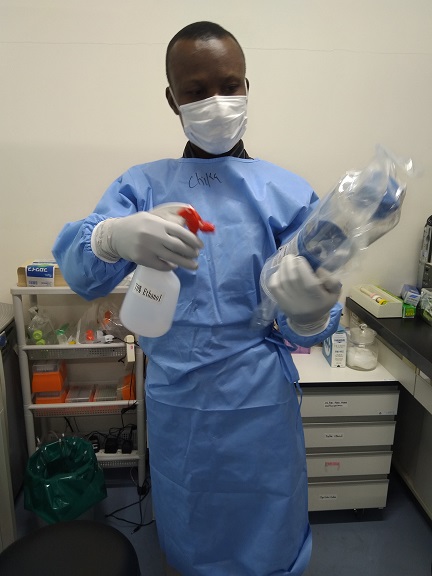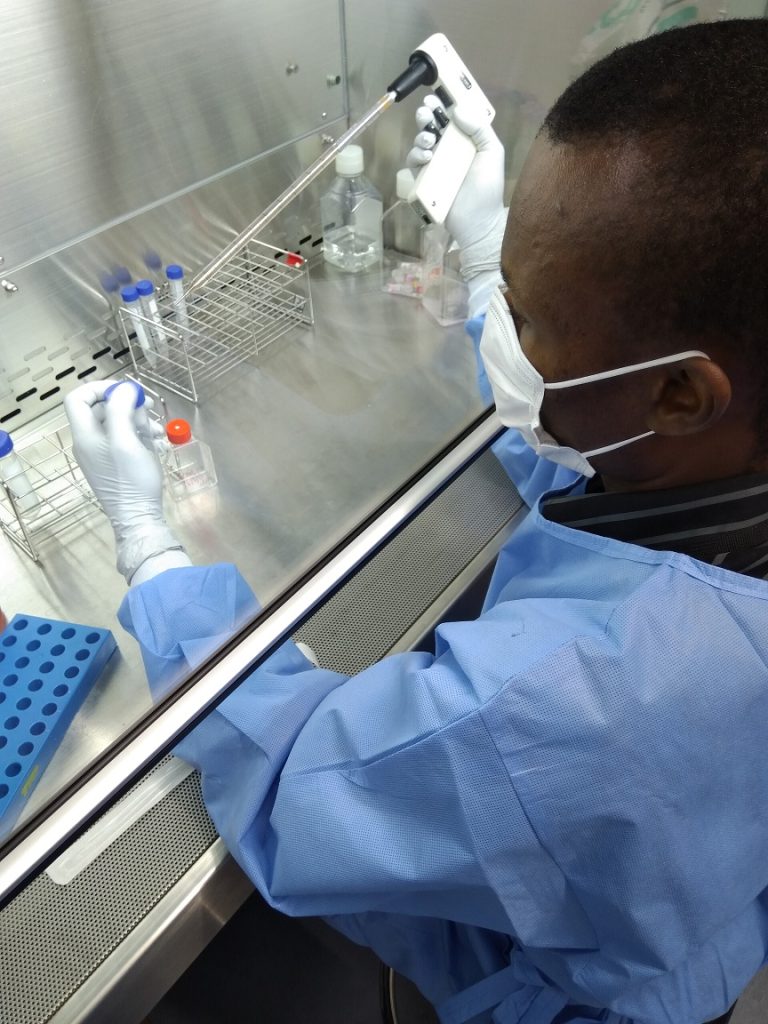Safety is paramount in any cell culture laboratory. It protects the researcher from possible contamination and it also helps to ensure that healthy cell lines are produced in the process. Failure to dutifully follow aseptic techniques and other safety measures in the cell culture laboratory can result in the contamination of cells. Some safety measures to be observed in the cell culture laboratory include:
- All new cells that arrives the cell culture lab should be first quarantined, and treated as potentially infected.
- Carcinogenic substances and materials should be handled with care and caution.
- Existing cell culture stocks should be regularly screened.
- New cells should also be screened to lookout for infection.
- Do not eat, smoke or drink in the cell culture working area.
- Used gloves should not be worn outside the cell culture laboratory.
- Do not bring in friends in to the cell culture laboratory for chatting or making phone calls.
- Protective clothing or lab coat should always be worn when in the cell culture laboratory.
- All equipment, reagents and media should be handled with care and according to the manufactures instructions.
- Hands should always be washed with detergents/antiseptics or soap before and after work and even before leaving the cell culture laboratory.
- Treat all liquid waste with bleach before disposing.
- Care should be taken when handling infectious cells (e.g. prions and viruses).
- The cell culture hood must always be used in cell culture experimentations to avoid cross contamination.
References
Alberts B, Bray D, Johnson A, Lewis J, Raff M, Roberts K andWalter P (1998). Essential Cell Biology: An Introduction to the Molecular Biology of the Cell. Third edition. Garland Publishing Inc., New York.
Alberts B, Bray D, Lewis J, Raff M, Roberts K and Watson J.D (2002). The molecular Biology of the Cell. Fourth edition. New York, Garland, USA.
Ausubel, F.M., Brent, R., Kingston, R.E., Moore, D.D., Seidman, J.G., Smith, J.A., Struhl, K., eds (2002). Short Protocols in Molecular Biology, 5th edn. John Wiley & Sons, New York.
Caputo J.L (1996). Safety Procedures. In: Freshney, R.I., Freshney, M.G., eds., Culture of Immortalized Cells. New York, Wiley-Liss, Pp. 25-51.
Cooper G.M and Hausman R.E (2004). The cell: A Molecular Approach. Third edition. ASM Press.
Davis J.M (2002). Basic Cell Culture, A Practical Approach. Oxford University Press, Oxford, UK.
Freshney R.I (2005). Culture of Animal Cells, a Manual of Basic Technique, 5th Ed. Hoboken NJ, John Wiley and Sons Publishers.
Health Services Advisory Committee (HSAC) (2003). Safe Working and the Prevention of Infection in Clinical Laboratories. HSE Books: Sudbury
Lodish H, Berk A, Matsudaira P, Kaiser C.A, Kreiger M, Scott M.P, Zipursky S.L and Darnell J (2004). Molecular Cell Biology. Fifth edition. Scientific American Books, Freeman, New York, USA.
Marcovic O and Marcovic N (1998). Cell cross-contamination in cell cultures: the silent and neglected danger. In Vitro Cell Dev Biol. 34:108.
Mather J and Barnes D (1998). Animal cell culture methods, Methods in cell biology. 2rd eds, Academic press, San Diego.
Verma P.S and Agarwal V.K (2011). Cytology: Cell Biology and Molecular Biology. Fourth edition. S. Chand and Company Ltd, Ram Nagar, New Delhi, India.
Discover more from #1 Microbiology Resource Hub
Subscribe to get the latest posts to your email.



